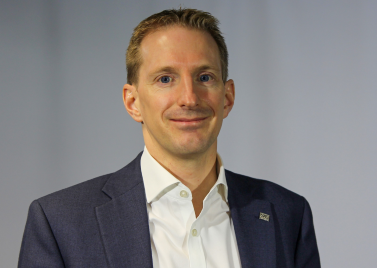A Year in Review: SAE International Aerospace Standards
Posted: January 22, 2024
Guest Post by David Alexander, Senior Director, Standards for SAE International
In a year marked by both tumult and innovation, the SAE International standards program posted significant progress in 2023.
This past year, SAE saw a full return to the richness of in-person committee meetings with 157 in-person meetings, up from 114 in 2022, taking place in Japan, Austria, Finland, Brazil, United States, United Kingdom, France, India, Germany, and Canada. Both large and small, these face-to-face meetings allowed committee members to engage directly with each other in the development of true collaborative consensus standards while fostering a lasting professional community with worldwide reach.
Committee Productivity
Over 500 aerospace and systems management standards were published by SAE International in 2023, including the long-anticipated and significant revisions to the cornerstone documents of aviation safety: ARP4754B™ and ARP4751A™ from the S-18 committee, known colloquially as the Foundations of Aircraft and Systems Safety (FASS).
The E-36 committee published AIR7368, a new document addressing cyber security for propulsion systems. SAE’s S-12 group responded to a formal tasking request from the FAA to support certification of helicopter engines by releasing ARP6912 covering inlet barrier filters. An important new Aerospace Information Report, AIR6148, on Synthetic Jet Fuels from Non-Petroleum Feedstocks was also released. Plus, the G-33 committee advanced digital transformation within aerospace by publishing SAE8579: The Evolution of Configuration Management into an Accelerating Digital World.
Among this progress, SAE International honored two individuals for their outstanding contributions to the industry through standards. Recognized for the SAE James Crawford Award were:
- Theodore Bohn - Argonne National Laboratory, sponsor of AIR7357 MegaWatt and Extreme Fast Charging for Aircraft in the SAE AE-7D Energy Storage and Charging committee and member of the Hybrid EV and Battery committee.
- William Steenken - GE Aviation (retired), Chair of the S-16 Turbine Engine Inlet Flow Distortion committee.
New Committees and Groups Formed
Two new committees were established in 2023 focusing on consensus standards as a pathway to certification in innovative and critical technologies.
The G-37 committee launched in March to provide guidance on certification and the production ecosystem for process intensive materials (PIM), like additive part manufacturing. The G-10H committee was created following high-level discussions between industry and authorities to develop guidance on the certification of flight-deck equipment. It will focus on the critical aspects of human factors in the safe integration of new flight-deck technologies and designs.
Additionally, the AE-5 committee formed a new task group, AE-5CH, to address airport operations for hydrogen fuel, both enabling and supporting the industry’s commitment to a sustainable future.
SAE also formed two new steering groups as part of its strategic roadmap initiative. The Advanced Air Mobility (AAM), and Advanced Manufacturing and Materials (AMM) groups, comprised of leaders from across aerospace, will develop roadmaps and gap analyses of the standards landscape and related activities necessary to progress and mature implementation and integration of these areas.
SAE Aerospace Council Activity
The SAE Aerospace Council, which oversees and manages the SAE International Aerospace Standards Program, met twice in 2023. The first meeting was in Fort Worth, TX, USA in conjunction with the SAE AeroTech Conference; followed by an Airbus-hosted meeting in Seville, Spain that included a tour of the Airbus A400M final assembly line.
Key initiatives advanced by the council in 2023 included: time-to-market for committee documents, council balloting, standards-supporting regulation, new technologies, and hybrid meetings.
The Council also welcomed a new Vice Chair, John Bouma, Director of Civil Certification and ODA at Bell Flight. He joined Council Chair Ron Clements of Spencer Aerospace Manufacturing, and three new members of the Council: Barrie Hicklin of Honeywell Aerospace, Bill Greene of Pratt and Whitney, and Richard Ambroise of Lilium Air Mobility (the first AAM/eVTOL company representative on the Council).
Significant Partnerships
In conjunction with the SAE E-40 Electrified Propulsion committee meeting in Tokyo in March, SAE signed a ground-breaking Memorandum of Cooperation with the Japanese Ministry of Economy, Trade and Industry (METI), and the Japan Civil Aviation Bureau (JCAB) to promote the Japanese aviation industry and its government experts contributing to SAE standards for the decarbonization of aviation.
Additionally, SAE signed memoranda of understanding with the Airports Council International (ACI World) to advance airport readiness for the use of electric and sustainable fuels and integration of advanced air mobility operations; and the National Defense Industry Association (NDIA) to support the evolution of the SAE EIA748 Earned Value Management standard and expand engagement with NDIA’s policy boards.
Digital Transformation
The model-based systems engineering (MBSE) community and standardization bodies specifically made advancements towards digital-ready standards and their integration into the digital workflow. This culminated in the launch of the Digital Standards Alliance (DSA). The DSA convenes aerospace and other mobility industry players with government bodies and software suppliers to align on a collaborative and interoperable solution that can facilitate the creation, distribution, and use of truly digital technical data.
In 2023, SAE was also granted a second U.S. patent for generation of digital standards using the machine learning model.
Looking Forward to 2024
SAE International looks forward to developing more critical partnerships to bring a comprehensive solution to aviation’s role in providing safety, security, and sustainability to our increasingly connected world. We will continue to strive, collectively, to bring greater efficiencies through process improvements and technology to the work of committees in providing timely and collaborative solutions for the benefit of humanity.
SAE thanks everyone who has been a part of the aerospace standards journey in 2023, including committee leaders, document sponsors, members and liaisons, the Aerospace Council, the SAE staff, and our partners across the community and around the world. We look forward to continuing to do our part to change the world for the better in 2024.
